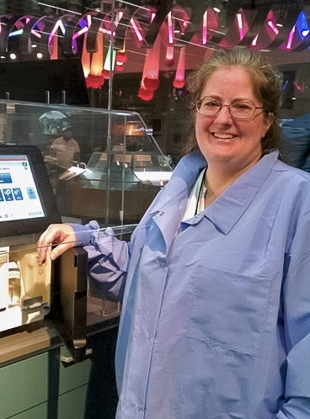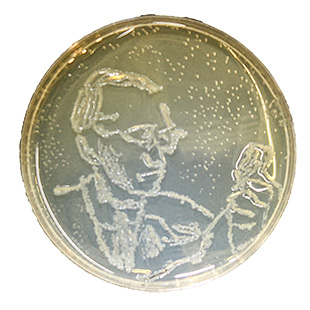Becoming a scientist: My journey to the Museum
For immediate release ‐ April 15, 2021
Contact: Micah Beasley, 919.707.9970. Images available upon request
By Marianne Barrier, PhD; Lab Manager, Genomics & Microbiology Research Lab
I’m amazed when I hear stories of individuals who knew at a young age exactly what they wanted to do and followed their passion straight into their chosen career. My path has been more of a winding road with lots of interesting side trips that helped lead me to where I am now.
I grew up in the Raleigh area and remember fondly taking field trips to the area museums and helping hold George the snake at the science museum. It never occurred to me then that I might eventually come to work in that same museum. For me, those trips were more opportunities to feed my passion for learning new things. At home, I would often sit in front of the bookcase, digging through our set of Compton’s Encyclopedia. I remember reading about two-toed and three-toed sloths and being fascinated by the clear pages about human anatomy where I could flip through the different body systems to see how they overlapped and connected.
My parents supported my natural curiosity by providing opportunities such as music and science camps as well as a set of home experiment kits called “Things of science”. My sister and I would eagerly await their arrival when we could unpack the box and read through the booklet to follow the experiments. These meant so much to me that I still have many of them.


As I grew up and had to start thinking about a career path, I had a hard time deciding which of my interests to focus on and initially thought about becoming a teacher. I managed to combine several interests when I earned my bachelor of science degree at UNC-Greensboro with a major in mathematics, a concentration in computer science, and a minor in art.
Of the many jobs I applied to with my shiny new degree, the first one I interviewed for and accepted was the only one that was not a programming job. I went to work as a contractor for the US Environmental Protection Agency (EPA), providing computer graphics support for a group of scientists writing large criteria documents on various environmental pollutants. I loved working for an organization involved in protecting human health and the environment and during my four years at this job I learned all I could from my coworkers and the scientists we were supporting. I also kept taking classes on the side, earning certificates in other areas, and realized that I needed to find a career where I would continue to learn new things.
Inspired by the scientists at the EPA, I went to graduate school at NCSU and earned my PhD in molecular genetics in the lab of Dr. Michael Purugganan. As a graduate student studying a family of plants found in Hawaii, I was not only able to learn the fundamental tools of genetic research, but also that field work was not for me. It’s as important to know your limitations as it is your strengths. Feeling driven towards research involved in protecting human health, I accepted postdoctoral positions in labs using mouse and cell models to understand certain types of birth defects in hopes of reducing their incidence. These positions led me to Seattle, Washington; College Station, Texas; then full circle back to Raleigh where I returned to the EPA as a scientist.

Marianne at the Illumina MiSeq DNA Sequencer.
It was during my time working as an EPA scientist that I learned about the building of the Nature Research Center (NRC) here at the Museum and the plans for glass-walled research labs where the public could see science in action. I was so excited by this concept that I volunteered for the first time at the NRC 24-hour grand opening where I stood by the DNA exhibit. As my job at the EPA was ending, I started volunteering more at the Museum as one of my career side trips. This led to my working in the Micro World Investigate lab as I taught Genetics at NCSU and eventually I had the opportunity to become the Lab Manager of the Genomics & Microbiology Research Lab.
I now use what I’ve learned along the way to fulfill the various roles of my job. I’m a scientist who performs research while also supporting the research of other scientists and students. I’m a coordinator who manages supplies, organizes spaces and maintains our Lab’s state-of-the-art equipment, such as our Illumina MiSeq DNA sequencer. I’m an educator who works with citizen scientists and gets to share my love of science with everyone.
 Marianne speaking at a Teen Science Cafe.
Marianne speaking at a Teen Science Cafe.

Marianne’s bacterial sketch of Dr. Jonas Salk holding a vial of the polio vaccine.
I’m even able to incorporate some art, such as my bacterial sketch of an image of Dr. Jonas Salk with the polio vaccine. My path may have been winding, but the journey was the preparation I needed to get me to where I am now.

